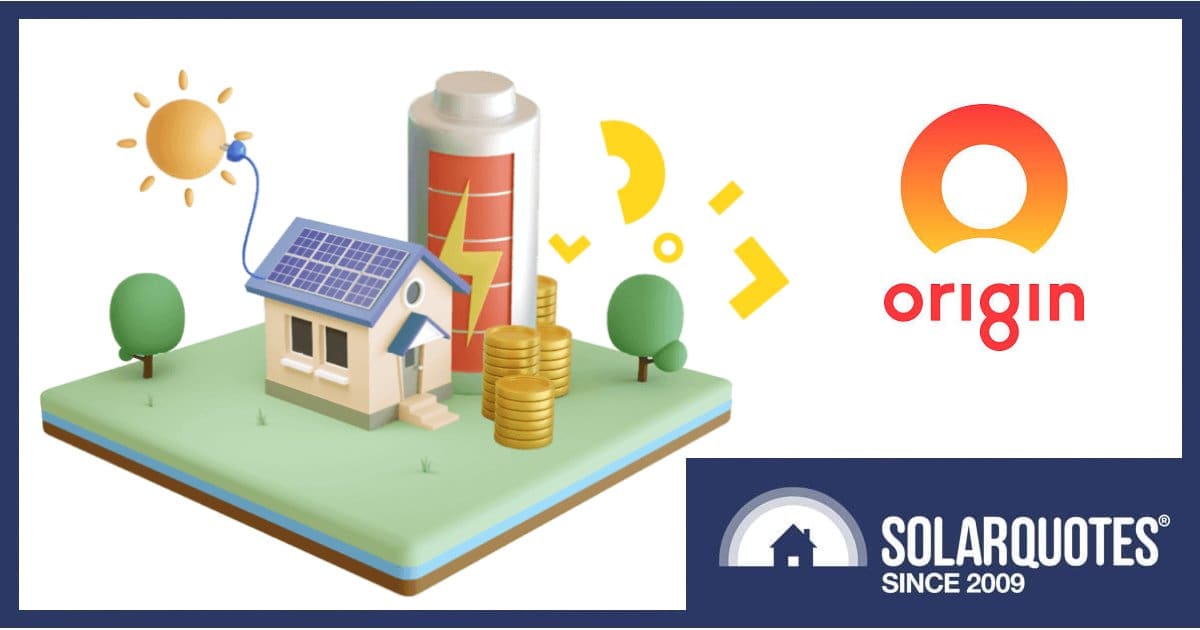
Origin Energy’s “Loop” VPP grew significantly in the last financial year according to the company’s 2024 Annual Report released last week.
A virtual power plant is a network of distributed energy generation and load resources controlled by a central operator. Depending on the model, the operator may tap into these resources to trade on the wholesale market – for example, discharging connected batteries into the grid during periods of peak demand when prices are high, and charging them when prices are negative. While generating revenue in this way, a VPP also assists in keeping the broader power system stable and may offer other grid stability services.
Origin’s Loop VPP connects to a number of different resources:
- solar batteries
- air conditioners
- hot water systems
- smart plugs
- EV chargers
Loop-Connected Batteries Grow 135%
Origin’s report states assets connected to Loop jumped by approximately 70 per cent, from 815 MW to 1,385 MW. While batteries connected to Loop grew 135 per cent across FY24 (numbers not mentioned), a major player was hot water.
“The load growth was primarily driven by additions to Origin’s hot water orchestration program, which represents an attractive opportunity to lower wholesale electricity costs by moving hot water heating load from overnight to the middle of the day, while actively managing customer requirements to maintain hot water amenities.”
Another up-and-coming contributor to its VPP is the company’s ‘EV Power Up‘ tariff. The offer was launched in May this year, and grew to 2,200 customers by 30 June 2024. It currently offers eligible Tesla owner customers an 8c/kWh rate during scheduled charge sessions, independent of any Origin electricity plan the customer is on.
Charging under PV Power Up depends on network conditions, e.g. when there is excess solar in the grid during the day or when electricity demand is low overnight. The charge schedule can be overridden when the need arises, but electricity supply will be charged at the customer’s standard electricity rate during those sessions.
In relation to EV chargers, Origin stated:
“… this class of asset is expected to be a key contributor of further growth as the range of eligible vehicles and home-chargers increases.”
Origin’s VPP Battery Offers – Look Before You Loop
In terms of solar batteries, the VPP is available to eligible customers within 50 kilometres of Sydney’s, Melbourne’s or Brisbane’s CBD, and those in Wollongong, Adelaide, and Gold Coast metro areas.
There are offers for Origin electricity supply customers (and those willing to become one) with eligible solar batteries already installed, and those buying one through Origin.
For the latter, they can get an upfront discount of $1,500 on the cost of a solar and battery package or standalone installation of a Tesla Powerwall, LG Chem RESU or Sungrow SBR HV – model availability may depend on the area. The company also offers a “$0 up front” option with a 24 or 60 month interest-free payment plan.
The contract is 5 years from the date the battery is installed and operational. Origin says it will not discharge more than 200 kWh from the battery a year, but – and these are pretty big buts – the company can:
“a) charge part or all of your Battery or discharge part or all of your Battery to the national electricity grid at any time; and
b) preserve the capacity in the Battery so that it can be used for your consumption at times determined by us.”
For those with an existing eligible inverter and battery, they get a $400 sign up bonus and credits of $1/kWh for battery energy sent to the grid during “Origin Loop events”. Outside of these events, Origin’s standard feed-in tariffs for solar exports apply.
Origin commits to not discharging more than 200 kWh of electricity from a BYO-battery to the grid during any 12-month period, and not tapping into it for the VPP during a blackout – which would be pretty hard to do anyway. But as to how much it may discharge during an event will vary. The company says customers with a Tesla Powerwall 2 will always be left with at least 20% capacity. Figures are not mentioned for other eligible systems, but as with the discounted battery offer, the terms indicate Origin may charge/discharge part/all of a battery.
An aspect I’m not clear on is whether or not the customer pays for the electricity used during an Origin-initiated charge event, and if so, how much.
With either offer, those interested should scrutinise them carefully, and particularly the terms and conditions – I won’t link to those in case they change (as they have done in the past), but the current versions can be accessed via the pages linked above.
It’s also wise to understand the general pros and cons of Virtual Power Plants before taking the plunge. And with more knowledge on-board, if you feel a VPP could be the right move for your household, you can see what’s available across Australia in SolarQuotes’ VPP comparison table.

 RSS - Posts
RSS - Posts



Is there a conflict of interest when a VPP is run by the very same electricity retailer the customer is signed up to? What’s stopping Origin from discharging your battery during the day thereby forcing you to purchase peak electricity come evening?
The T&Cs of the VPP is what puts the limits on what the VPP operator can do. So read them carefully.